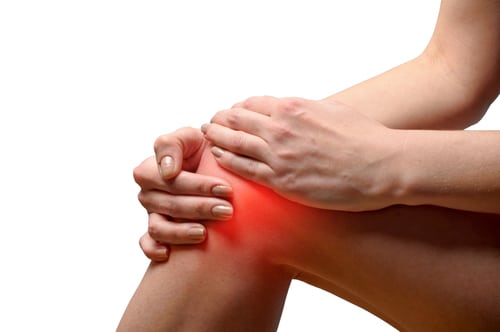
Tendinopathy is typically painful and makes it difficult to exercise, especially Achilles tendonitis or tendinopathy. Achilles tendinopathy affects the tendon that inserts into the heel. It’s one of the most common types of tendon injury. Patellar tendinopathy, involving the tendon that connects the kneecap to the shin bone, is another common form of tendon injury. Patella tendinopathy is known as “jumper’s knee.” That tells you a lot about how you get it, doesn’t it?
Ideally, you want to avoid tendon problems at all costs. They take time to heal and require you to modify your workout – or not work out at all. Achilles tendinopathy is especially slow to heal since it doesn’t get a great deal of blood flow. It’s one of the most common overuse injuries in runners.
There are three main factors that increase your risk of tendon injury. Take steps to control these factors helps to keep your tendons healthy and injury-free.
Tight Muscles
Tight hamstrings and quadriceps muscles increase stress on your patellar tendon. This puts you at greater risk for patellar tendinopathy, a painful condition that makes jumping, climbing stairs or running uncomfortable. In the same way, tight calf muscles increase strain on your Achilles’ tendons and put you at risk for Achilles tendonitis.
The key to keeping these tendons healthy is to work on increasing flexibility in your calf and thigh muscles. Do this by doing gentle stretching exercises after every workout to “lengthen” the muscles. Always make sure your muscles are warm by doing a warm up before working out or doing stretching exercises. Jumping into a workout with “cold” muscles increases the risk of tendon injury. Dynamic stretches help to increase flexibility and reduce stiffness that contributes to tendon damage. Give yourself adequate time to warm up and cool down. Many people skip this step. It’s especially important to do this as you get older and your tendons become stiffer and less flexible.
Changing the Intensity or Duration of Your Workouts Too Quickly
Doing too much too fast is another common problem that increases your risk of tendon injury. Runners are guilty of this. Rather than gradually increase their mileage, they increase the intensity or volume of their training too quickly and develop a bad case of Achilles tendonitis that puts them on the sidelines for weeks. For some Achilles tendonitis ends their running career.
Even if you don’t run, you’re still at risk for lower extremity tendon injuries. If you do plyometric workouts that involve a lot of jumping, don’t increase the intensity too fast. Jumping places stress on the patellar tendon. Alternate plyometric days with lower impact ones to reduce stress on your patellar tendons. Another thing to be aware of when jumping – land softly with your knees bent. Never land with your knees straight. This places too much stress on your knees and is thought to be a contributing factor to ACL tears.
Muscle Imbalances
Muscle imbalances between opposing muscle groups are worth identifying and correcting since it can reduce your risk for injury. Once you’ve identified an imbalance, work on strengthening the weaker muscle. When muscles that flex are weaker than muscles that extend or vice versa it decreases flexibility and places stress on tendons. Plus, when you have a muscle imbalance, the weaker muscle fatigues more quickly than the opposing muscle. When a muscle fatigues it doesn’t absorb shock as well, creating conditions that are ripe for a tendon injury.
Other Factors That Contribute to a Lower Extremity Tendon Injury
Wearing the wrong exercise shoes and anatomical problems, especially leg length discrepancies, put added stress on the patellar tendon as well as on the Achilles tendon. Foot alignment problems and flat feet increase the risk for tendon injuries too. If you’re having repeated tendon injuries, see a sports medicine doctor. They can check you for leg length discrepancies and alignment issues and make recommendations. Sometimes a change in footwear or adding orthotics can make a big difference. If you’ve had a tendon injury before you’re at greater risk for tendinopathy or tendon injury than someone who hasn’t had one. That’s why identifying anatomical problems that put you at risk is important.
The Bottom Line?
Preventing injury should always be a priority. Gradually increase the intensity of your workouts, work on increasing your flexibility and try to correct any muscle imbalances. If you’re prone towards tendon injuries, see a sports medicine doctor to see if there are anatomical issues putting you at greater risk.
References:
BMJ. Mar 16, 2002; 324(7338): 626-627.
Am J Sports Med March 2001 vol. 29 no. 2 190-195.
Related Articles By Cathe:
Does Stretching Prevent Tendon Injuries?
Is It Okay to Exercise With Tendonitis?
The Process to Start Rehabbing an Achilles Injury
The Most Common Fitness Training Injuries & How to Prevent Them
Can You Strengthen Your Tendons?

